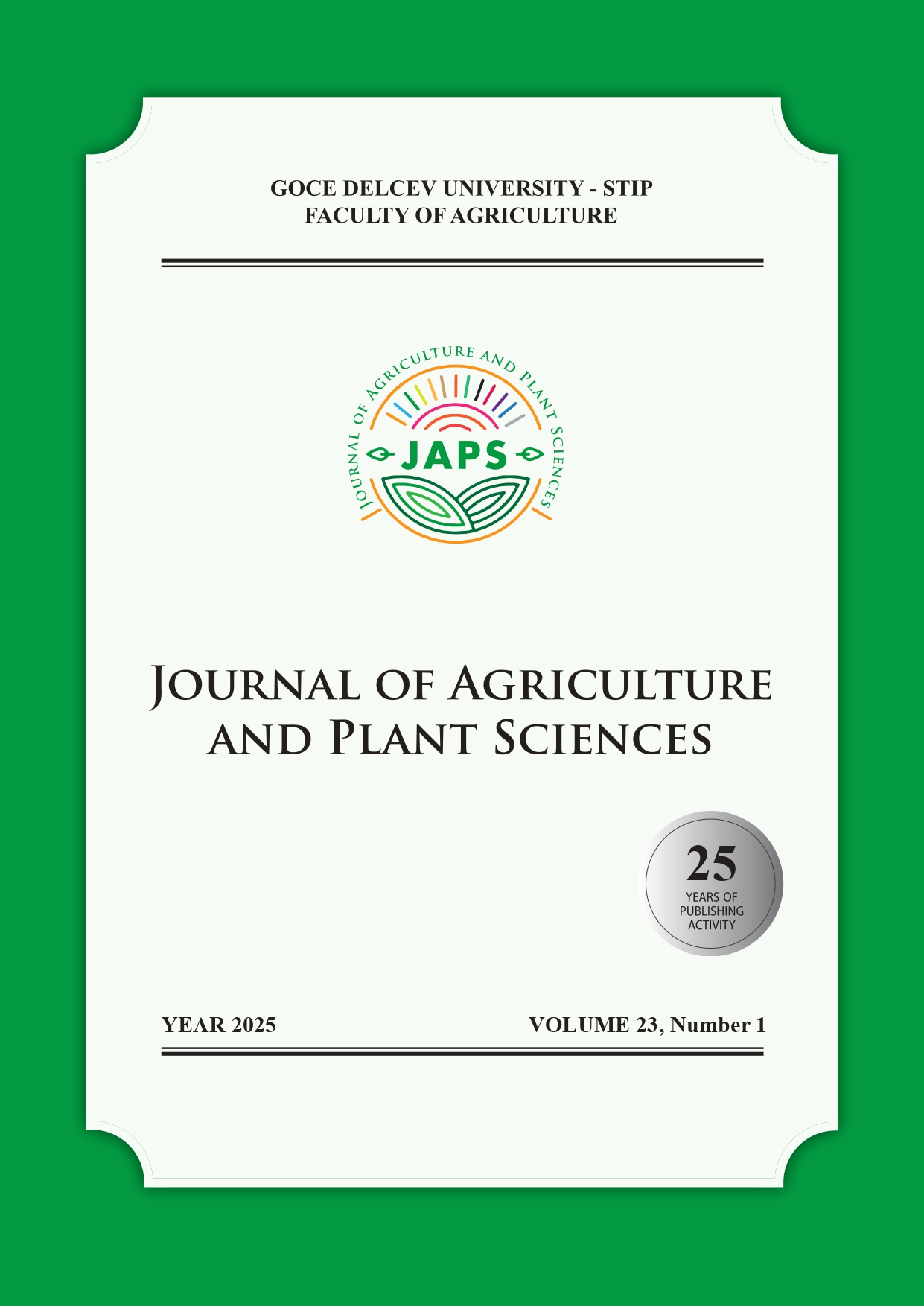USING MINERALS AS TRACERS FOR FUNCTIONAL VEGETABLES AND FRUITS
DOI:
https://doi.org/10.46763/JAPS2523183sKeywords:
fruits and vegetables, trace elements, food traceability, elemental profiling, mineral composition, ICP-MS, multivariate analysisAbstract
This study investigates the elemental composition of a diverse selection of fruits and vegetables collected from the Vinica region in eastern North Macedonia, aiming to evaluate the use of minerals as tracers for identifying functional properties in plant-based foods. A total of 27 plant species were analyzed, including commonly consumed fruits (orange, grapes, melon, banana, apple, kiwi, pomegranate and others) and vegetables (carrot, spinach, broccoli, beetroot, arugula, ginger and others), using inductively coupled plasma mass spectrometry (ICP-MS). Concentrations of 34 elements, from essential nutrients (K, Ca, Mg, Fe, Zn, Se) to potentially toxic trace elements (Pb, Cd, As, Hg), were quantified. Descriptive statistics and multivariate techniques, such as factor and cluster analysis, were applied to explore patterns of mineral association, inter- and intra-species variability, and differentiation between fruit and vegetable groups. The results revealed clear differences in mineral content, with leafy and root vegetables showing higher levels of macro-elements and trace metals, while fruits were richer in elements linked to reproductive and metabolic functions. Mineral clustering revealed co-association trends influenced by botanical, physiological, and environmental factors. These findings highlight the utility of elemental composition as a reliable indicator for evaluating nutritional value, functional potential, and geographic provenance of plant-based foods.
Downloads
Published
Issue
Section
License
The intellectual property and copyright on the original content of all scientific contributions in the published paper shall remain with the authors. Authors give permission to the JAPS owner to publish the paper. All authors agree to publish the paper under Attribution-NonCommercial-NoDerivatives 4.0 International license (CC BY-NC-ND 4.0).

